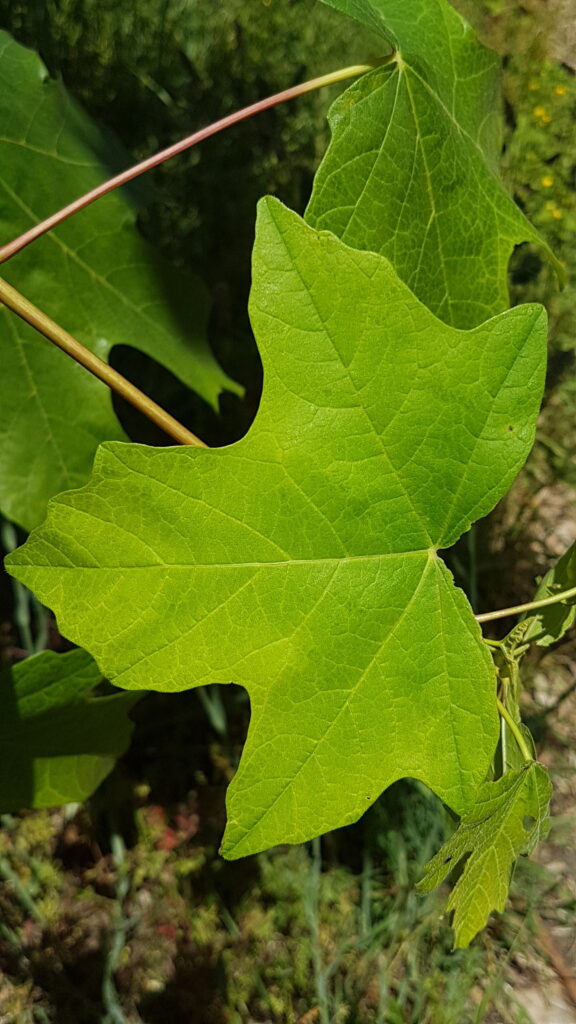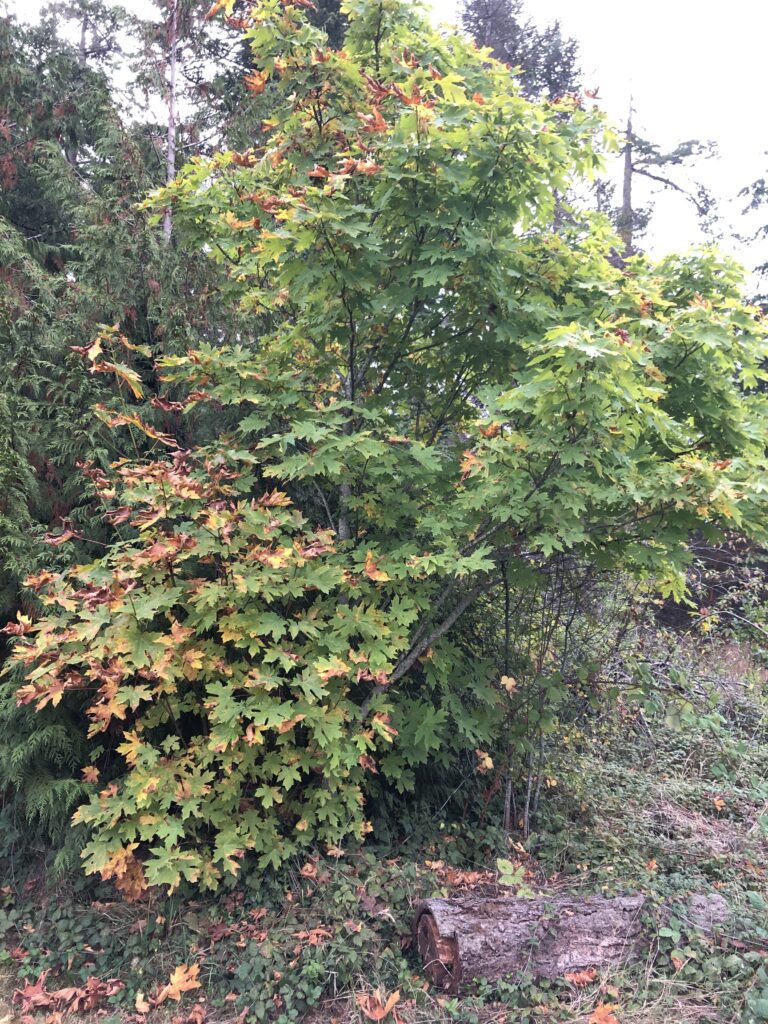Bigleaf Maple (Acer macrophyllum)

The bigleaf maple is the largest species of maple in Canada. It is found in moist habitats in southwestern British Columbia, often near the edges of rivers or lakes. The bigleaf maple has large, five-lobed leaves and grey-brown bark. It produces small clusters of greenish-white flowers in March and April. These flowers develop into winged fruits called samaras. The seeds are dispersed by the wind, and the winged shape allows them to travel farther away from the parent tree before reaching the ground.

First Nations communities in BC have many different uses for bigleaf maple. The young shoots and flowers can be eaten. The wood was used for carving artwork, as well as to make dishes and paddles. The sap was also made into maple syrup, although the low sugar concentration of the sap meant that a large amount of sap was needed to produce a small amount of syrup. Sugar maple sap has a much higher sugar content, so it is preferred for making syrup.

Bigleaf maple trees are very important for their ability to increase species diversity in an ecosystem. They can support large communities of moss and lichen, because their bark is rich in calcium. In fact, they can have such a dense layer of plant material on their branches that it forms a small layer of soil, which can then support larger plants such as ferns or tree seedlings. Bigleaf maples also provide food for many animals; birds and small mammals eat the buds and flowers, while deer eat the branches and leaves of saplings.
For more information, visit E-Flora BC or the Native Plants PNW website.


